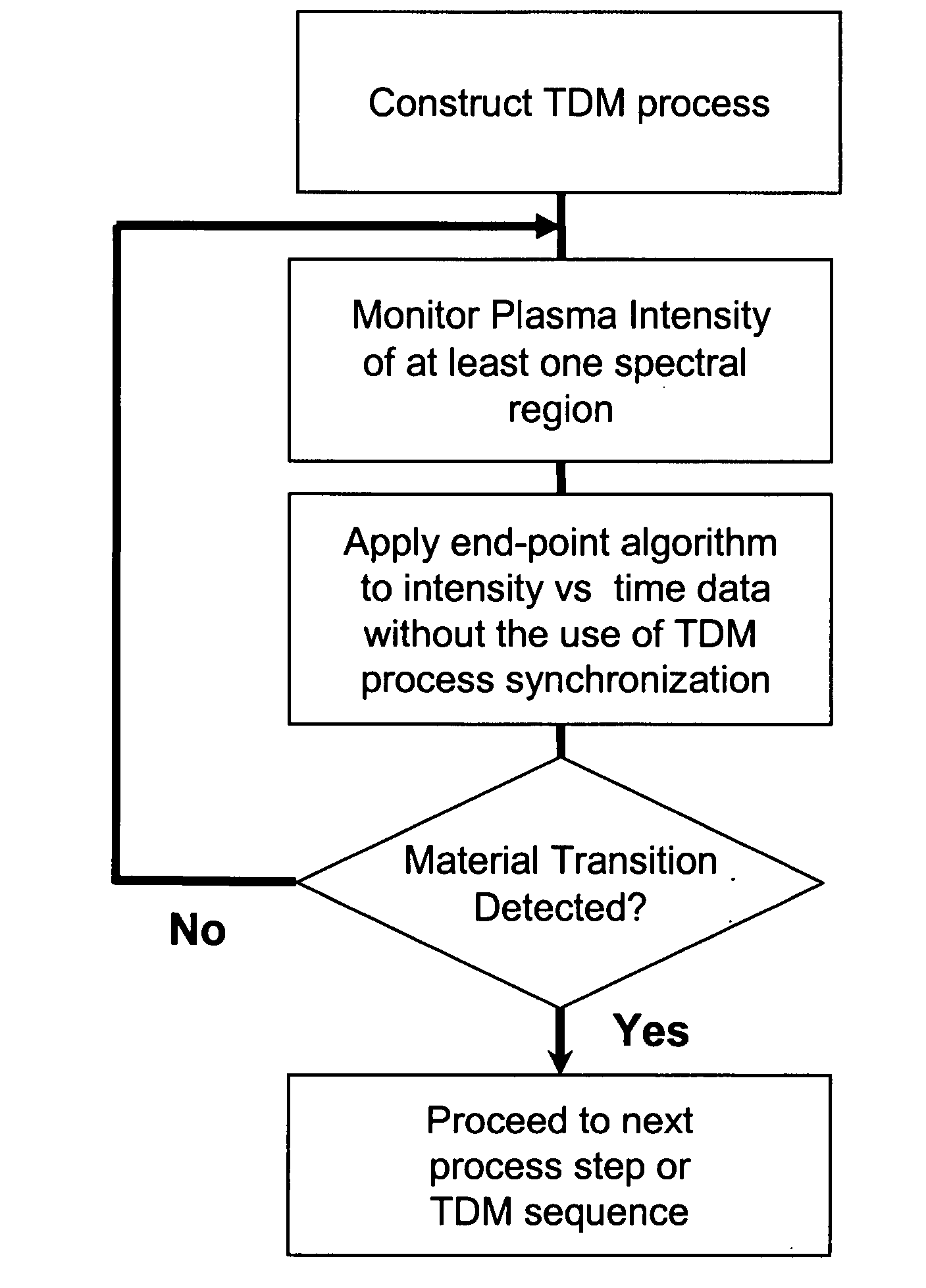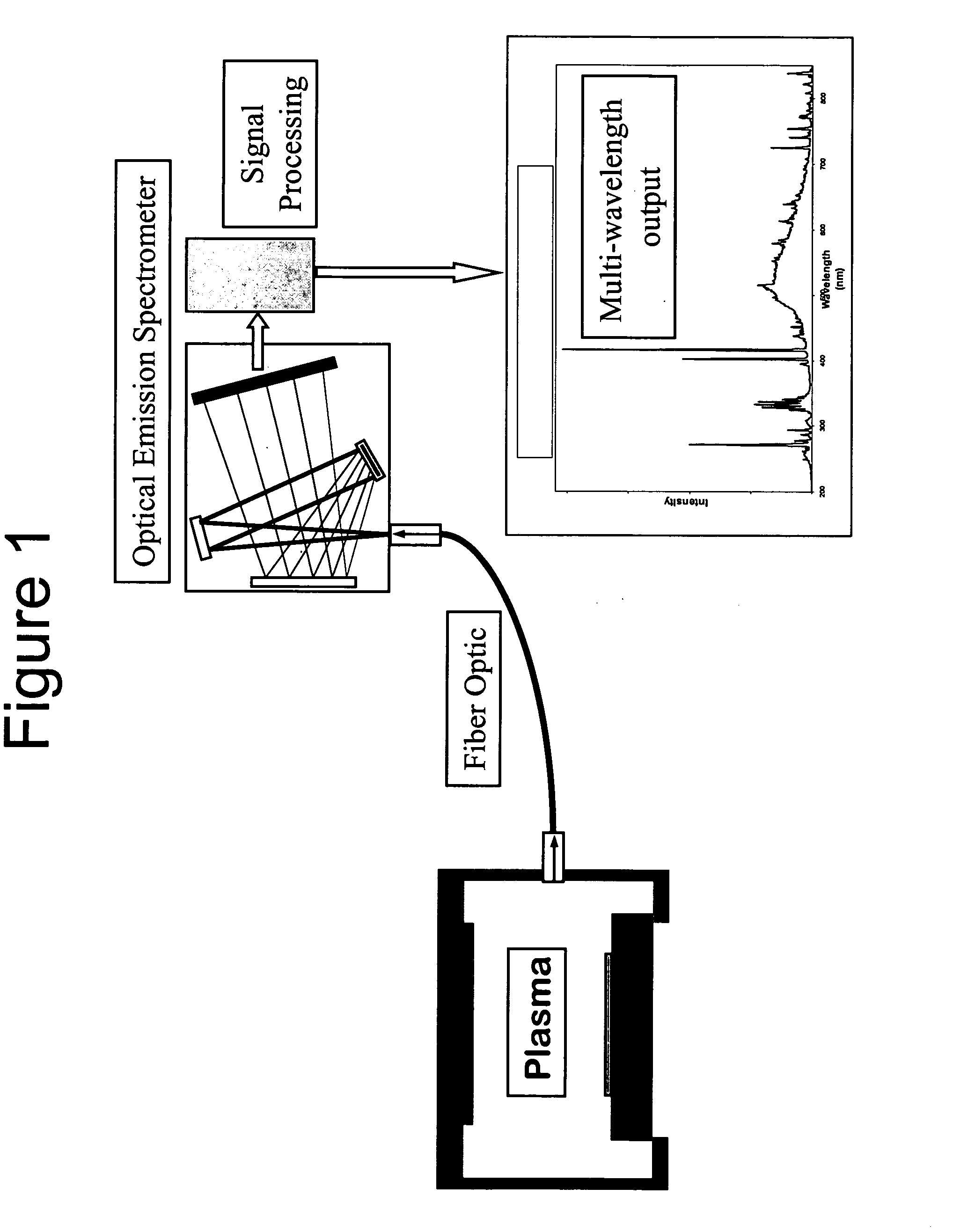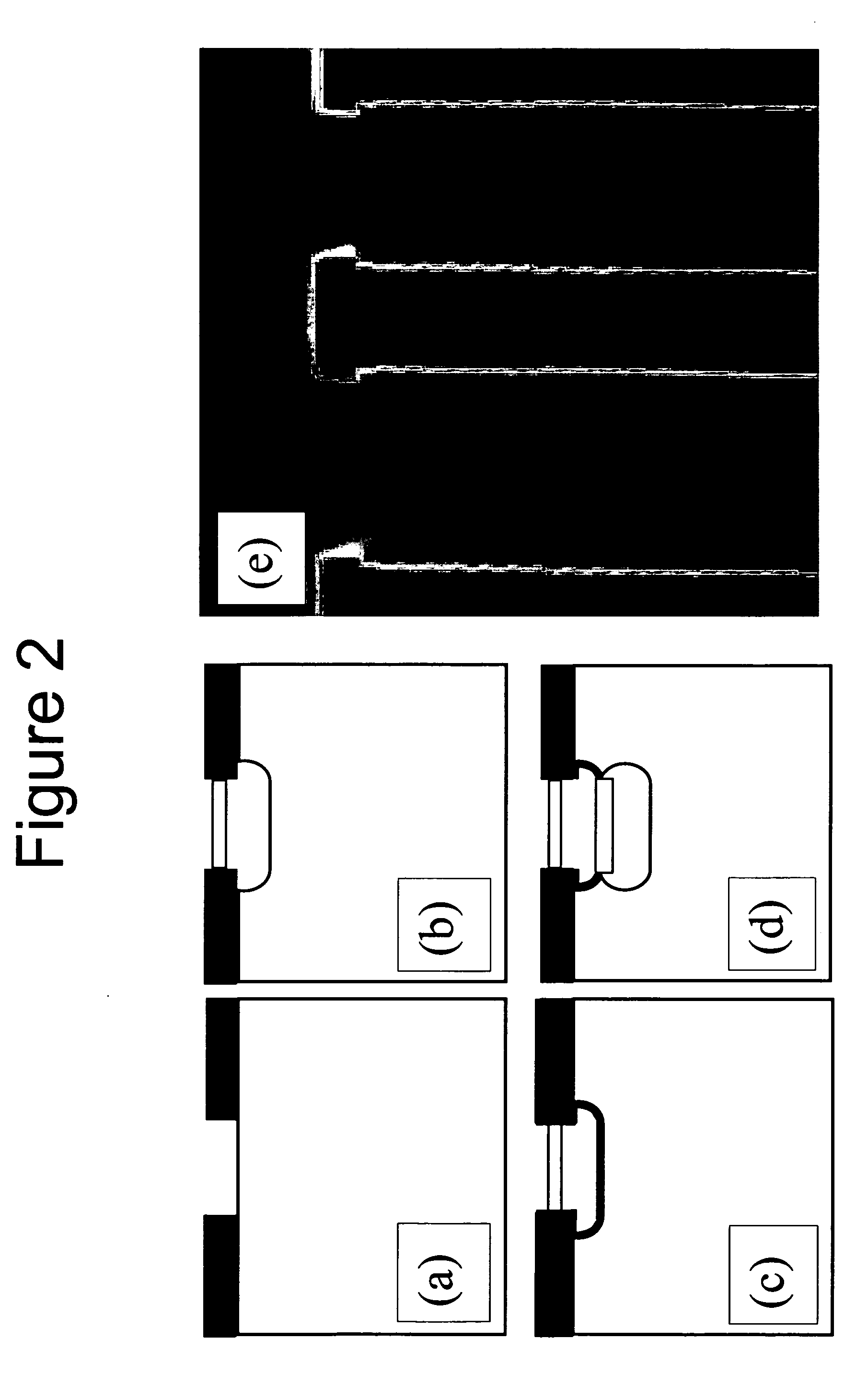Selection of wavelengths for end point in a time division multiplexed process
a time division multiplexing and process technology, applied in semiconductor/solid-state device testing/measurement, instruments, fluid pressure measurement, etc., can solve the problem of reducing the thickness of the underlying stop layer, and affecting the effect of oes sensitivity and stability
- Summary
- Abstract
- Description
- Claims
- Application Information
AI Technical Summary
Problems solved by technology
Method used
Image
Examples
Embodiment Construction
[0052] We disclose a means of detecting the transition between different materials in a time division multiplexed (TDM) process by analyzing the intensity of at least one wavelength region of the plasma emission without the use of a synchronizing trigger.
[0053] The choice of these wavelength regions is selected such that the wide variation in signal intensity that occurs during the alternating series of etch and deposition steps is reduced. Over small wavelength ranges, with no major emission lines, the plasma background emission is nearly constant. Hence, the ratio of two nearby wavelength regions (in this instance at 440 nm and 443 nm) has a value close to 1 when no etching is occurring. This is true in both the deposition and etch steps providing the wavelengths are selected carefully. Hence, as the process alternates between the deposition and etch steps, the value of the ratio changes only slightly and remains close to a value equal to 1. By displaying the ratio of the two wav...
PUM
| Property | Measurement | Unit |
|---|---|---|
| wavelength | aaaaa | aaaaa |
| wavelength | aaaaa | aaaaa |
| frequency | aaaaa | aaaaa |
Abstract
Description
Claims
Application Information
 Login to View More
Login to View More - R&D
- Intellectual Property
- Life Sciences
- Materials
- Tech Scout
- Unparalleled Data Quality
- Higher Quality Content
- 60% Fewer Hallucinations
Browse by: Latest US Patents, China's latest patents, Technical Efficacy Thesaurus, Application Domain, Technology Topic, Popular Technical Reports.
© 2025 PatSnap. All rights reserved.Legal|Privacy policy|Modern Slavery Act Transparency Statement|Sitemap|About US| Contact US: help@patsnap.com



